- Page 1 and 2:
My Reading
- Page 3 and 4:
Offshore Drilling Charlie Chong/ Fi
- Page 5 and 6:
闭 门 练 功 Charlie Chong/ Fion
- Page 7:
Charlie Chong/ Fion Zhang Fion Zhan
- Page 11:
BOK Knowledge Percentage Score I. A
- Page 15:
Part IVA Chapter 16 Audit Program M
- Page 19:
Part IVA1 Flow Chart Meaning Audit
- Page 23:
Part IVA1 Management’s Role Suppo
- Page 27:
Part IVA1 IVA1-Gossip While auditin
- Page 31:
Part IVA2 2. Staffing And Resource
- Page 35:
Part IVA2 Second-Party Auditor Seco
- Page 39:
Part IVA2 Second-Party Auditor Seco
- Page 43:
Part IIIE Auditor’s Role The use
- Page 47:
Part IIIE Information Securities. A
- Page 51:
Part IVA2 IVA2-Gossip The justifica
- Page 55:
Part IVA3 3. Auditor Training And D
- Page 59:
Part IVA3 Ongoing Qualification- Co
- Page 63:
Part IVA3 ASQ CQA Recertification.
- Page 67:
Part IVA3 Learn from The Experts- e
- Page 71:
Part IVA3 Auditor Performance. The
- Page 75:
Part IVA3 Effective Performance Eva
- Page 79:
Part IVA3 Who audits the Auditor? h
- Page 83:
http://www.iia.org.au/sf_docs/defau
- Page 87:
Charlie Chong/ Fion Zhang Part IVA4
- Page 91:
Charlie Chong/ Fion Zhang Part IVA4
- Page 95:
Charlie Chong/ Fion Zhang Part IVA4
- Page 99:
Charlie Chong/ Fion Zhang Part IVA4
- Page 103:
Charlie Chong/ Fion Zhang Part IVA4
- Page 107:
Charlie Chong/ Fion Zhang Part IVA4
- Page 111:
Charlie Chong/ Fion Zhang Part IVA4
- Page 115:
Part IVA4 Performance Improvement M
- Page 119:
Charlie Chong/ Fion Zhang Part IVA4
- Page 123:
Charlie Chong/ Fion Zhang Part IVA4
- Page 127:
Charlie Chong/ Fion Zhang Part IVA4
- Page 131:
Charlie Chong/ Fion Zhang Part IVA4
- Page 135:
Part IVA4 Charlie Chong/ Fion Zhang
- Page 139:
Charlie Chong/ Fion Zhang Part IVA5
- Page 143:
Charlie Chong/ Fion Zhang Part IVA5
- Page 147:
Charlie Chong/ Fion Zhang Part IVA5
- Page 151:
Charlie Chong/ Fion Zhang Part IVA5
- Page 155:
Charlie Chong/ Fion Zhang Part IVA5
- Page 159:
Part IVA5 CM-QA-001 Procedure for I
- Page 163:
Part IVA5 The Manager of Quality As
- Page 167:
Part IVA5 4. Procedures 4.1 Plannin
- Page 171:
Part IVA5 4.2.2 Notice of Audits Au
- Page 175:
Part IVA5 4.2.4 Pre-Audit Meeting T
- Page 179:
Part IVA5 4.2.6 Post-Audit A post-a
- Page 183:
Part IVA5 Major obstacles encounter
- Page 187: Part IVA5 4.3 Follow-up The respons
- Page 191: Part IVA5 5. Flowchart https://www.
- Page 195: Part IVA5 7. Attachments none https
- Page 199: Part IVA5 Standard Operating Proced
- Page 203: Part IVA5 References To be filled i
- Page 207: Part IVA5 Operating mode ID Code: A
- Page 211: Part IVA5 Auditing procedure The Au
- Page 215: Charlie Chong/ Fion Zhang Part IVA5
- Page 219: Charlie Chong/ Fion Zhang Part IVA5
- Page 223: Charlie Chong/ Fion Zhang Part IVA6
- Page 227: Charlie Chong/ Fion Zhang Part IVA6
- Page 231: Charlie Chong/ Fion Zhang Part IVA6
- Page 235: Charlie Chong/ Fion Zhang Part IVA7
- Page 241: Charlie Chong/ Fion Zhang Part IVA7
- Page 245: Charlie Chong/ Fion Zhang Part IVA8
- Page 249: Charlie Chong/ Fion Zhang Part IVA8
- Page 253: Charlie Chong/ Fion Zhang Part IVA8
- Page 257: Charlie Chong/ Fion Zhang Part IVA8
- Page 261: Charlie Chong/ Fion Zhang Part IVA8
- Page 265: Charlie Chong/ Fion Zhang Part IVA8
- Page 269: Charlie Chong/ Fion Zhang Part IVA8
- Page 273: Part IVA8 Risk Reporting Matrix Usi
- Page 277: Charlie Chong/ Fion Zhang Part IVA8
- Page 281: Charlie Chong/ Fion Zhang Part IVA8
- Page 285: Charlie Chong/ Fion Zhang Part IVA8
- Page 289:
Charlie Chong/ Fion Zhang Part IVA8
- Page 293:
Charlie Chong/ Fion Zhang Part IVA8
- Page 297:
Charlie Chong/ Fion Zhang Part IVA9
- Page 301:
Charlie Chong/ Fion Zhang Part IVA9
- Page 305:
Charlie Chong/ Fion Zhang Part IVA9
- Page 309:
Charlie Chong/ Fion Zhang Part IVB1
- Page 313:
Charlie Chong/ Fion Zhang Part IVB1
- Page 317:
Charlie Chong/ Fion Zhang Part IVB1
- Page 321:
Charlie Chong/ Fion Zhang Part IVB1
- Page 325:
Charlie Chong/ Fion Zhang Part IVB1
- Page 329:
Charlie Chong/ Fion Zhang Part IVB1
- Page 333:
Charlie Chong/ Fion Zhang Part IVB1
- Page 337:
Charlie Chong/ Fion Zhang Part IVB2
- Page 341:
Charlie Chong/ Fion Zhang Part IVB2
- Page 345:
Charlie Chong/ Fion Zhang Part IVB2
- Page 349:
Charlie Chong/ Fion Zhang Part IVB3
- Page 353:
Charlie Chong/ Fion Zhang Part IVB3
- Page 357:
Charlie Chong/ Fion Zhang Part IVB3
- Page 361:
Charlie Chong/ Fion Zhang Part IVB3
- Page 365:
Charlie Chong/ Fion Zhang Part IVB3
- Page 369:
Charlie Chong/ Fion Zhang Part IVB4
- Page 373:
Charlie Chong/ Fion Zhang Part V Pa

















